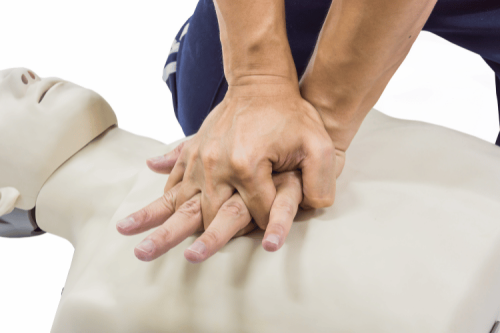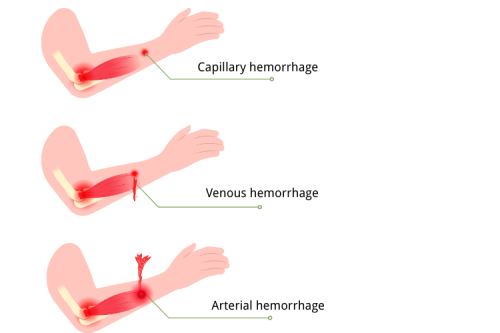
Breathing is a vital process that happens instinctively for most of us. Yet, when something disrupts this automatic rhythm, it can be more than uncomfortable; it can be life-threatening. Paradoxical breathing, an abnormal respiratory pattern, occurs when the chest and abdominal muscles move in opposite directions rather than harmoniously. This rare condition often signifies severe underlying health issues that require immediate attention.
This article examines the causes, mechanisms, symptoms, and treatment of paradoxical breathing in depth, equipping you with the knowledge to recognize and address this critical respiratory condition.
Understanding Paradoxical Breathing
Paradoxical breathing is when the chest and abdomen move in opposite directions during breathing, contrary to normal, coordinated movement. It is often considered a sign of underlying respiratory or neurological issues and can range from mild to severe. Paradoxical breathing typically indicates that the mechanics of normal breathing are compromised, leading to reduced airflow and potential difficulty in oxygenating the body.Normal Breathing vs. Paradoxical Breathing
Normal Breathing
Under normal circumstances, breathing is a smooth and synchronized process that involves coordinated movements of the diaphragm and chest muscles. During inhalation, the diaphragm contracts and moves downward, creating more space in the chest cavity. This action reduces pressure in the lungs, allowing air to flow in. At the same time, the intercostal muscles (located between the ribs) lift the ribcage slightly outward, further expanding the chest. During exhalation, the diaphragm relaxes and moves back upwards while the chest wall returns to its resting position, pushing air out of the lungs. Normal breathing is efficient and ensures enough oxygen is delivered to the blood while carbon dioxide is expelled properly. The chest and abdomen tend to rise and fall harmoniously during this process.Paradoxical Breathing
Paradoxical breathing disrupts this coordination. Instead of moving together, the chest and abdomen move in opposition. For example, the chest may collapse inward during inhalation while the abdomen expands outward, or vice versa. This abnormal movement can interfere with lung expansion, leading to shallow or ineffective breaths. Paradoxical breathing is often a sign of conditions such as diaphragm dysfunction, upper airway obstruction, chest trauma, or neuromuscular disorders. It can also arise in severe cases of asthma, chronic obstructive pulmonary disease (COPD), or sleep apnea. Since paradoxical breathing impacts the efficiency of oxygen exchange, it can result in symptoms like shortness of breath, fatigue, and cyanosis (a bluish tint to the skin due to a lack of oxygen).How the Diaphragm and Chest Muscles Work
The Role of the Diaphragm
The diaphragm is the primary muscle responsible for breathing. It is a dome-shaped sheet of muscle located beneath the lungs, separating the chest and abdominal cavity. During normal breathing, the diaphragm's contraction flattens its dome shape, increasing the vertical space of the chest cavity. This movement reduces the pressure inside the lungs below atmospheric pressure, drawing air in. When the diaphragm relaxes during exhalation, it regains its dome shape, reducing chest cavity volume and increasing pressure in the lungs, which expels air. The diaphragm is crucial in ensuring the breathing process remains rhythmic and efficient. However, in paradoxical breathing, the diaphragm may not function properly. Diaphragmatic paralysis or dysfunction can cause it to move upward during inhalation instead of downward, leading to the chest and abdomen's characteristic "opposite" movement. This disruption can significantly impair the ability to take in enough air.The Role of Chest Muscles
The intercostal and accessory muscles of the chest also contribute to breathing, particularly during physical exertion or in individuals with breathing difficulties. The intercostal muscles allow the rib cage to expand outward during inhalation and return to its resting state during exhalation. During paradoxical breathing, the chest muscles may work inefficiently or even compensate for the diaphragm’s dysfunction. For example, if the diaphragm is paralyzed or weakened, the accessory respiratory muscles, such as those in the neck and upper chest, may be overactivated to help lift the chest cavity. Despite their effort, the lack of proper coordination between the diaphragm and chest muscles results in the opposing movements seen in paradoxical breathing.Paradoxical Movements
The hallmark of paradoxical breathing lies in these uncoordinated mechanisms between the diaphragm and chest muscles. If the diaphragm moves abnormally, it can confuse or override the signals guiding chest wall expansion, impairing air flow into the lungs. Similarly, suppose the chest muscles are weakened or restricted due to trauma or disease. Their inability to function properly may force the diaphragm to compensate, further disrupting normal respiration. In summary, paradoxical breathing shows that the finely tuned interactions between the diaphragm and chest muscles have been disrupted. Understanding the mechanics of these structures is key to identifying and addressing the underlying causes of this abnormal breathing pattern. If left untreated, paradoxical breathing can lead to more severe issues, emphasizing the importance of medical evaluation and intervention.Key Symptoms of Paradoxical Breathing
Paradoxical breathing is a troubling respiratory pattern that occurs when the chest and abdominal movements become uncoordinated during breathing. This condition can indicate serious underlying health issues. Below, we discuss the key symptoms in detail.Abnormal Chest and Abdominal Movements
One of the hallmark signs of paradoxical breathing is the irregular movement of the chest and abdomen. Normally, the chest expands during inhalation, and the abdomen rises as the diaphragm contracts, while both relax during exhalation. However, in paradoxical breathing, this natural synchronization is disrupted. The chest may move inward during inhalation instead of outward, while the abdomen expands. Similarly, the chest might expand abnormally during exhalation, and the abdomen retracts. These movements can appear disjointed and are easily noticeable during close observation. This abnormality often points to weakened or impaired diaphragm muscles, chest trauma, or neurological issues. It can also be associated with airway blockages or lung conditions such as COPD (Chronic Obstructive Pulmonary Disease). Identifying these unusual movements early is crucial, as they often signal underlying health concerns requiring medical attention.Shortness of Breath and Fatigue
Shortness of breath, or dyspnea, is another significant symptom of paradoxical breathing. This occurs because irregular chest and abdominal movements compromise the efficiency of the respiratory system, making it harder for the body to take in enough oxygen. This inefficiency forces the individual to breathe faster or deeper to compensate, which can be physically draining. Over time, the constant strain of inefficient breathing can lead to noticeable fatigue. Even simple tasks such as walking, speaking, or climbing stairs may tire the individual more quickly than usual. The body’s struggle to maintain adequate oxygen levels takes a toll, affecting physical energy and mental focus. Persistent shortness of breath and exhaustion should never be ignored, as they often require immediate medical evaluation.Cyanosis and Other Warning Signs
Cyanosis, or the bluish discoloration of the skin, lips, or fingernails, is a critical warning sign of paradoxical breathing. This symptom arises due to insufficient oxygen levels in the blood, a condition known as hypoxemia. Cyanosis may appear during episodes of severe paradoxical breathing but can worsen if the underlying cause remains untreated. As the brain receives less oxygen, it is often accompanied by feelings of lightheadedness or confusion. Other warning signs of paradoxical breathing include increased heart rate, known as tachycardia, and a sense of panic or anxiety during breathing difficulties. These symptoms indicate the body’s struggle to meet oxygen demands. Additionally, paradoxical breathing may worsen at night or when lying flat, leading to sleep disturbances and decreased quality of life.Final Note
Understanding these key symptoms of paradoxical breathing is essential for recognizing the condition early and seeking timely medical care. Abnormal chest and abdominal movements, shortness of breath paired with fatigue, and severe warning signs like cyanosis all signal potential respiratory dysfunction. Medical evaluation is vital to address the root cause and prevent further complications.Causes and Risk Factors of Paradoxical Breathing
Paradoxical breathing, also known as paradoxical respiration, is a condition in which the movements of the chest and abdomen during breathing are not coordinated in the typical way. Normally, the chest expands outward, and the abdomen moves outward during inhalation. However, in paradoxical breathing, the chest collapses inward while the abdomen moves outward. This abnormal breathing pattern often indicates an underlying health issue that impairs normal respiratory function. Below is an in-depth exploration of the causes and risk factors associated with paradoxical breathing.Trauma and Chest Injuries
One of the most common causes of paradoxical breathing is trauma to the chest or thoracic structures. Injuries such as rib fractures, blunt force trauma, or penetrating wounds can compromise the structural stability of the chest wall and diaphragm.- Flail Chest is a specific type of injury strongly associated with paradoxical breathing. It occurs when multiple adjacent ribs are fractured so that a segment of the chest wall moves independently of the rest. During inhalation, the fractured segment collapses inward, while during exhalation, it protrudes outward, leading to a paradoxical movement pattern.
- Hemothorax or pneumothorax, which involve the accumulation of blood or air in the pleural cavity, can also impair breathing mechanics and cause paradoxical motions.
- Surgical interventions, such as thoracic surgeries, may damage the intercostal muscles or diaphragm, further contributing to irregular respiratory movements.
Neurological Disorders and Diaphragm Dysfunction
Paradoxical breathing can arise from neurological conditions that interfere with the signals controlling the diaphragm and other respiratory muscles. The diaphragm, the primary breathing muscle, is especially vulnerable to dysfunction when neurological pathways are disrupted.- Spinal Cord Injuries, particularly those at or above the cervical level, can sever the communication between the brain and the respiratory muscles. High cervical spinal cord injuries often result in significant diaphragm weakness or paralysis.
- Neuromuscular Disorders, such as amyotrophic lateral sclerosis (ALS), muscular dystrophy, or Guillain-Barré syndrome, lead to progressive weakening of the muscles, including those required for breathing. Such weakness can result in paradoxical movements of the chest and abdomen.
- Phrenic Nerve Damage can impair diaphragm function, whether caused by trauma, surgical complications, or infections. Since the phrenic nerve is essential for sending motor signals to the diaphragm, any disruption in its function can lead to abnormal respiratory patterns.
Chronic Respiratory Conditions (e.g., COPD, Sleep Apnea)
Long-standing respiratory conditions, particularly those that chronically strain the respiratory muscles, increase the risk of paradoxical breathing.- Chronic Obstructive Pulmonary Disease (COPD) is a significant contributor. Over time, patients with COPD experience hyperinflation of the lungs and increased workload on the diaphragm. This excessive strain may cause the diaphragm to fatigue or weaken, leading to inefficient breathing and paradoxical movements.
- Obstructive sleep apnea (OSA) is characterized by repeated airway obstruction during sleep, which can cause abnormal breathing. Severe cases may result in asynchronous chest and abdominal movements during respiratory efforts, particularly at night.
- Other chronic conditions, such as severe asthma or restrictive lung diseases, can also impair the coordination of breathing muscles, potentially leading to paradoxical breathing under stress or during exacerbations.
Pediatric and Infant-Specific Causes
Paradoxical breathing is often observed in infants and young children due to their immature respiratory systems and differences in chest wall anatomy.- Premature Infants are particularly prone to paradoxical breathing because their chest wall is more compliant (less rigid) than that of adults. This means that their ribs may not provide adequate structural support during respiration, leading to inward collapse of the chest with inhalation.
- Congenital Diaphragmatic Hernia (CDH) is a condition in which an abnormal opening in the diaphragm allows abdominal organs to move into the chest cavity. This can significantly impede normal diaphragm function and cause paradoxical movements.
- Respiratory Distress Syndrome (RDS) and other conditions affecting lung compliance in neonates can also disrupt coordinated breathing mechanics. When these infants experience respiratory distress, their immature muscles and soft chest wall exacerbate paradoxical patterns.
- Neurological Abnormalities, such as birth trauma, hypoxic-ischemic encephalopathy, or congenital muscular dystrophies, can weaken respiratory control centers or muscles, increasing the likelihood of paradoxical breathing.
Why Is Paradoxical Breathing Dangerous?
Paradoxical breathing, a condition where the chest moves inward during inhalation instead of expanding outward, is a significant symptom often associated with severe respiratory or neurological issues. It can be life-threatening, disrupting the natural mechanics of breathing, preventing the body from absorbing adequate oxygen and efficiently expelling carbon dioxide. Below, we explore the dangers of paradoxical breathing in detail across three primary areas of concern:Hypoxia and Respiratory Acidosis
Paradoxical breathing can severely compromise oxygen intake, leading to hypoxia, a condition in which insufficient oxygen reaches the body’s tissues. Oxygen is essential for cellular functions, and a lack of it can cause widespread organ dysfunction. When oxygen levels drop, cells cannot produce the energy they need to sustain bodily functions, resulting in fatigue, confusion, and damage to critical organs like the brain and heart. Additionally, paradoxical breathing prevents the effective expulsion of carbon dioxide. When carbon dioxide builds up in the blood, it leads to respiratory acidosis. This imbalance causes the blood to become more acidic than normal, impairing enzyme activity and disrupting metabolic processes. Over time, respiratory acidosis can worsen organ failure and further destabilize the individual’s condition.Increased Risk of Respiratory Failure
Paradoxical breathing signifies a mechanical fault in the respiratory system, often stemming from diaphragm paralysis, flail chest, or severe muscle fatigue. This disruption means the body must work harder to draw in air, placing excessive strain on the respiratory muscles. If the underlying cause is not promptly addressed, paradoxical breathing can escalate to respiratory failure. Respiratory failure occurs when the lungs can no longer oxygenate blood effectively or remove carbon dioxide. This can quickly become a medical emergency, requiring interventions such as mechanical ventilation to sustain life. The progression from paradoxical breathing to full-blown respiratory failure underscores the immediate threat posed by this abnormal breathing pattern.Long-Term Impact on Lung Function
Chronic paradoxical breathing can have lasting effects on lung function. Over time, the abnormal mechanics of breathing can weaken respiratory muscles, leading to decreased endurance and efficiency. This muscle weakness can create a vicious cycle, making it harder for the individual to recover full respiratory capacity after treating the underlying issue. Prolonged episodes of paradoxical breathing can also contribute to structural changes in the lungs and chest wall. For example, recurrent hypoxia and impaired gas exchange may damage alveoli, the small air sacs in the lungs where oxygen and carbon dioxide are exchanged. This damage could lead to reduced lung compliance and chronic respiratory conditions, leaving the individual with persistent breathing difficulties and reduced quality of life.Diagnosing Paradoxical Breathing: Methods and Tools
Paradoxical breathing, a sign of impaired respiratory function, occurs when the chest and abdomen move in opposite directions during inhalation, deviating from the regular synchronized breathing pattern. Accurate diagnosis is critical, as it often points to underlying medical conditions such as diaphragm paralysis, chest wall trauma, or neuromuscular disorders. A comprehensive diagnostic approach involves several methods and tools, each providing unique insights into the cause and extent of the dysfunction. Below is an in-depth overview of the primary techniques for diagnosing paradoxical breathing.Physical Examination and Observation
The initial step in diagnosing paradoxical breathing is a thorough physical examination and detailed observation of the patient’s breathing patterns. Clinicians closely observe the chest and abdominal movements during respiration. Paradoxical breathing is often evident as the chest sinks inward while the abdomen expands during inhalation, rather than moving outward together. This abnormal movement can be amplified when the patient lies flat, as gravity exacerbates the dysfunction. The physical examination may also include palpation of the chest wall and abdomen to assess muscle engagement, rigidity, or weakness. Clinicians often ask patients to perform deep breathing further to evaluate the stability and coordination of their respiratory muscles. During these assessments, other accompanying signs such as cyanosis, erratic respiratory rates, or the use of accessory muscles for breathing can provide additional clues about the severity of the condition.Imaging Tests (X-rays, CT Scans)
Imaging is a vital diagnostic tool for identifying the underlying structural causes of paradoxical breathing. Chest X-rays are commonly used as a first-line imaging test, allowing clinicians to detect abnormalities such as diaphragmatic elevation, rib fractures, or lung collapse (atelectasis). X-rays are beneficial for identifying gross structural abnormalities that affect respiratory mechanics. Computed tomography (CT) scans may be employed for a more detailed evaluation. CT scans offer high-resolution images of the chest and diaphragm, enabling clinicians to identify subtle structural issues such as small hernias, lung pathologies, or chest wall anomalies. These scans provide a more comprehensive view, helping to confirm the diagnosis or detect associated complications. X-rays and CT scans are non-invasive and widely accessible, making them essential tools in the diagnostic process.Pulmonary Function Tests and Oxygen Monitoring
Pulmonary function tests (PFTs) assess the respiratory system's overall functionality, providing critical insights into airflow, lung volumes, and diffusion capacities. Specific parameters, such as forced vital capacity (FVC) or expiratory volume in one second (FEV1), can reveal restrictive or obstructive patterns that might contribute to paradoxical breathing. Oxygen monitoring is another crucial component of the evaluation. Pulse oximetry measures blood oxygen saturation levels non-invasively, while arterial blood gas (ABG) analysis can provide more precise data about oxygen and carbon dioxide concentrations in the blood. A mismatch between oxygen delivery and demand, alongside elevated carbon dioxide levels (hypercapnia), often points to respiratory muscle fatigue or decreased ventilatory efficiency, which may correlate with paradoxical breathing.Advanced Diagnostic Tools (e.g., Ultrasound of the Diaphragm)
Advanced diagnostic tools, particularly ultrasound imaging of the diaphragm, are increasingly used for a more detailed assessment of paradoxical breathing. Diaphragm ultrasound is non-invasive and allows real-time visualization of diaphragmatic movement and thickness during the breathing cycle. This method can differentiate between normal diaphragmatic function, reduced movement, or complete paralysis. Clinicians can measure diaphragmatic excursion and muscle thickness fraction to evaluate muscle performance. Ultrasound is especially beneficial in diagnosing neuromuscular reasons behind paradoxical breathing or confirming diaphragmatic paralysis in cases where imaging findings are inconclusive. Its portability makes it an excellent option for bedside evaluations, particularly in critically ill patients.Other Considerations in Advanced Diagnostics
Although less commonly used, fluoroscopy and magnetic resonance imaging (MRI) can also assess diaphragmatic motion. For example, fluoroscopy allows for dynamic diaphragm imaging during respiration, revealing paradoxical motion patterns. However, its use is limited due to radiation exposure and the need for specialized equipment. While offering excellent, detailed imaging, MRI is less often employed due to its higher cost and longer scan times.Treatment Options for Paradoxical Breathing
Paradoxical breathing is when the chest and abdominal movements during inhalation and exhalation appear uncoordinated. This can result from respiratory muscle weakness, trauma, or underlying neurological conditions. Managing paradoxical breathing requires a comprehensive approach focused on immediate stabilization, surgical correction when needed, and long-term strategies to enhance respiratory function and quality of life. Below is an in-depth overview of the key treatment options.
Emergency Interventions
Oxygen Therapy
Oxygen therapy is critical in managing acute cases of paradoxical breathing, especially if hypoxemia (low blood oxygen levels) is present. Administering supplemental oxygen ensures the body receives an adequate oxygen supply, alleviating symptoms like shortness of breath and fatigue. Depending on the severity of the respiratory distress, oxygen is delivered through nasal cannulas, face masks, or high-flow oxygen devices. This intervention buys time to address the underlying causes and stabilize the patient.
Ventilation
Mechanical ventilation may be necessary in more severe cases where the respiratory muscles cannot maintain effective breathing. Non-invasive ventilation (NIV), such as continuous positive airway pressure (CPAP) or bilevel positive airway pressure (BiPAP), supports breathing by maintaining airway pressure and reducing the effort required to breathe. For critical cases, invasive mechanical ventilation through endotracheal intubation may be employed. This approach is often life-saving, especially in cases involving trauma or neuromuscular dysfunction affecting breathing mechanics.
Surgical Solutions
Rib Fixation
Paradoxical breathing caused by rib fractures, such as flail chest, may require surgical rib fixation. This procedure uses plates, screws, or other hardware to stabilize broken ribs, restoring chest wall integrity and improving respiratory mechanics. Rib fixation not only alleviates significant pain but also reduces the abnormal chest movements associated with paradoxical breathing. This results in better ventilation and a quicker overall recovery.
Diaphragm Plication
Diaphragm dysfunction, particularly unilateral or bilateral paralysis, can lead to paradoxical breathing. It is a surgical technique to tighten and flatten the weakened or paralyzed diaphragm, stabilizing its movement. Correcting this abnormal motion helps restore effective breathing patterns and enhances lung expansion. It is primarily indicated for long-term cases where conservative treatments have failed.
Breathing Exercises for Recovery
Once the acute phase is managed, breathing exercises become essential for recovery. Techniques like diaphragmatic breathing and pursed-lip breathing help strengthen respiratory muscles and improve lung function.
- Diaphragmatic Breathing: Also known as belly breathing, this technique involves consciously engaging the diaphragm during inhalation. It promotes deep breathing, which enhances oxygen exchange and stabilizes the chest and abdominal motion.
- Pursed-Lip Breathing: This method helps regulate breathing rates and reduces the effort needed for exhalation. It is instrumental in managing shortness of breath.
- Inspiratory Muscle Training (IMT): Using devices designed to increase resistance during inhalation can further build respiratory strength and endurance.
Respiratory therapists typically guide breathing exercises to ensure proper technique and gradual improvement. Consistency in practice is vital for long-term benefits.
Lifestyle Adjustments for Long-Term Management
For sustained improvement and prevention of recurrent symptoms, long-term lifestyle adjustments play a vital role. These include:
- Smoking Cessation: Smoking damages lung tissue and impairs respiratory muscle function, exacerbating breathing difficulties. Quitting smoking is one of the most significant changes for individuals with any respiratory condition.
- Maintaining a Healthy Weight: Excess weight increases the workload of breathing and can strain respiratory muscles. A balanced diet and regular exercise help support overall lung health.
- Physical Activity: Light to moderate exercise, such as walking or swimming, fosters cardiovascular and pulmonary health. Incorporating exercises that promote chest and diaphragm expansion is particularly beneficial.
- Managing Underlying Conditions: Conditions like COPD, asthma, or neuromuscular disorders must be carefully managed to prevent the exacerbation of paradoxical breathing. Adhering to prescribed medications and regular medical check-ups is essential.
- Stress Management: Stress and anxiety can worsen breathing issues by triggering shallow or erratic breathing patterns. Mindfulness techniques, such as yoga or meditation, help promote relaxation and support steady breathing.
By combining emergency interventions, surgical solutions, targeted breathing exercises, and long-term lifestyle adjustments, individuals with paradoxical breathing can significantly improve their respiratory function and overall quality of life. Early diagnosis and a tailored treatment plan are crucial for optimal outcomes.
Managing and Preventing Paradoxical Breathing
Paradoxical breathing is a condition where a person’s diaphragm and chest wall move in contrary patterns during respiration. Instead of expanding during inhalation and contracting during exhalation, the movements reverse, which can disrupt breathing efficiency. This condition is often associated with underlying respiratory or neuromuscular disorders, chest trauma, or extreme muscle fatigue. Managing and preventing paradoxical breathing involves a multifaceted approach, including avoiding triggers, strengthening respiratory muscles, utilizing assistive devices, and maintaining regular medical oversight.
Avoiding Chest Trauma and Respiratory Triggers
Chest trauma, whether from physical impact or internal strain, can significantly contribute to paradoxical breathing. Such injuries may weaken the structural integrity of the chest wall and diaphragm, leading to improper respiratory patterns. Avoiding activities that could result in a blow to the chest, ensuring proper use of protective equipment during sports or high-risk tasks, and practicing safe behaviors are essential preventive measures.
Additionally, respiratory triggers such as allergens, smoke, or pollutants can exacerbate the condition, particularly in those with existing respiratory vulnerabilities like asthma or chronic obstructive pulmonary disease (COPD). Maintaining a clean indoor environment, using air purifiers, and avoiding exposure to secondhand smoke or other irritants helps reduce triggers. People prone to respiratory issues should also monitor seasonal changes and air quality levels to minimize exposure that could lead to breathing complications.
Strengthening Respiratory Muscles Through Exercises
The diaphragm and intercostal muscles play a central role in facilitating proper respiration. Weakness in these muscles can contribute to paradoxical breathing. Respiratory muscle training exercises can help strengthen this system, improve lung capacity, and restore coordinated movement patterns.
Breathing exercises like diaphragmatic breathing and pursed-lip breathing promote optimal diaphragm function. Diaphragmatic breathing involves lying flat, placing a hand on the abdomen, and focusing on controlled, deep breathing where the stomach rises on inhalation and falls on exhalation. This technique helps re-engage the diaphragm’s natural movement. Pursed-lip breathing, commonly used by those with COPD, involves inhaling deeply through the nose and exhaling slowly through pursed lips, which aids in maintaining airway pressure and slowing breath rate.
Additionally, inspiratory muscle training (IMT) devices can provide resistance during inhalation, helping to build strength in key respiratory muscles. Engaging in yoga or stretching practices that emphasize controlled breathing may further enhance coordination between the chest wall and diaphragm, improving overall respiratory efficacy.
Using Assistive Devices (e.g., CPAP Machines)
For individuals whose paradoxical breathing stems from conditions like obstructive sleep apnea (OSA) or neuromuscular disorders, assistive devices can offer significant relief. Continuous Positive Airway Pressure (CPAP) machines are commonly prescribed for OSA patients, providing a steady stream of pressurized air to keep airways open during sleep. This prevents nighttime respiratory disruptions and supports proper breathing patterns.
Other devices such as BiPAP (Bilevel Positive Airway Pressure) machines or mechanical ventilators may be considered for severe cases involving chronic respiratory failure. These devices coordinate breathing when the body struggles to maintain regular airflow independently. Proper fit, regular maintenance, and adherence to usage guidelines are crucial for effective support.
Importance of Regular Medical Check-Ups
Routine medical evaluations are key in managing paradoxical breathing and identifying underlying causes. These check-ups allow healthcare providers to monitor breathing patterns, assess respiratory function, and adjust treatments as needed. Diagnostic tools like pulmonary function tests, X-rays, or sleep studies can help pinpoint the root problem, determining whether the condition arises from structural, muscular, or disease-related factors.
Additionally, regular visits allow for timely interventions, whether modifying a treatment plan, addressing comorbidities, or fine-tuning the use of assistive devices. These appointments also provide opportunities for patients to share symptoms, track progress, and receive tailored advice on lifestyle modifications or further rehabilitation strategies.
Managing and preventing paradoxical breathing requires a proactive and holistic approach. By avoiding chest trauma and respiratory triggers, strengthening respiratory muscles through targeted exercises, utilizing assistive devices when necessary, and prioritizing regular medical check-ups, individuals can mitigate the impact of this condition and improve their overall respiratory health. Sustained effort in these areas not only helps restore normal breathing patterns but also enhances day-to-day well-being for those affected.
Complications of Untreated Paradoxical Breathing
Paradoxical breathing is an abnormal respiratory pattern where the chest contracts during inhalation and expands during exhalation, contrary to normal breathing mechanics. If left untreated, paradoxical breathing can lead to severe complications that impact the respiratory system, overall oxygenation, and long-term health. Below is a detailed overview of the primary complications associated with untreated paradoxical breathing.
Development of Respiratory Failure
Paradoxical breathing is often a sign of underlying respiratory muscle dysfunction or neuromuscular impairment. When the mechanics of breathing are compromised, the ability to move air effectively into and out of the lungs is significantly reduced. This leads to insufficient ventilation, where the body is unable to meet its oxygen demands or remove carbon dioxide adequately.
Key consequences include:
- Hypercapnia (Excess Carbon Dioxide): With impaired ventilation, carbon dioxide builds up in the blood, leading to symptoms such as confusion, headaches, and eventual respiratory acidosis.
- Hypoxemia (Low Oxygen Levels): The decreased air exchange reduces oxygen levels in the blood, causing fatigue, shortness of breath, and cyanosis (bluish skin).
- Acute Respiratory Failure: Over time, paradoxical breathing may culminate in respiratory failure, requiring mechanical ventilation to support breathing.
Without timely intervention, the progression of respiratory failure can become life-threatening, as the body loses its ability to sustain adequate oxygenation on its own.
Risk of Hypoxia and Organ Damage
The abnormal respiratory pattern in paradoxical breathing disrupts the normal oxygen delivery to tissues and organs. Prolonged periods of hypoxia, or low oxygen levels, can have cascading effects on the body’s major systems.
Risks associated with hypoxia include:
- Brain Dysfunction: The brain is highly sensitive to oxygen deprivation, and chronic hypoxia can lead to cognitive impairments, memory loss, and, in severe cases, permanent brain damage.
- Myocardial Injury: The heart requires a continuous supply of oxygen to function properly. Hypoxia strains the heart, increasing the risk of arrhythmias, angina, or even heart failure.
- Multi-Organ Failure: Persistent oxygen deprivation affects major organs like the kidneys and liver. This can lead to systemic organ damage and reduced functionality, which may become irreversible without intervention.
At its worst, untreated paradoxical breathing and the resulting hypoxia can lead to critical conditions like cardiac arrest or severe brain injury, underscoring the importance of addressing the condition promptly.
Long-Term Cardiovascular and Pulmonary Issues
Over time, untreated paradoxical breathing can have significant implications for both cardiovascular and pulmonary health. Chronic stress on the respiratory system and inefficient oxygenation place additional demands on the heart and lungs, leading to a cycle of compounding health problems.
Pulmonary Complications
- Chronic Obstructive Pulmonary Disease (COPD): The altered breathing mechanics may worsen or contribute to the onset of chronic pulmonary conditions, making it harder for patients to breathe even at rest.
- Respiratory Muscle Fatigue: Overuse of auxiliary muscles to compensate for the abnormal breathing weakens these muscles, further impeding effective respiration.
- Impaired Lung Function: Long-term abnormal breathing patterns may lead to reduced pulmonary capacity, making even minimal physical exertion challenging.
Cardiovascular Complications
- Pulmonary Hypertension: Chronic hypoxemia and abnormal breathing increase pressure in the pulmonary arteries, forcing the heart to work harder to pump blood to the lungs.
- Right Heart Strain: Pulmonary hypertension can cause the right side of the heart to enlarge and weaken, eventually leading to right-sided heart failure (cor pulmonale).
- Systemic Hypertension: Poor oxygenation triggers stress responses in the body, such as increased blood pressure, contributing to long-term cardiovascular risks.
Addressing paradoxical breathing early is essential to prevent these chronic complications. Ignoring the condition increases the burden on the respiratory and cardiovascular systems, reducing overall quality of life and life expectancy.
Untreated paradoxical breathing can have far-reaching consequences, ranging from acute respiratory failure to long-term cardiovascular and pulmonary issues. The disruption in standard breathing mechanics can lead to hypoxia, organ damage, and systemic complications, significantly impacting overall health. Early recognition and treatment of paradoxical breathing are vital to preventing these severe outcomes and ensuring better long-term health outcomes.
Frequently Asked Questions
Q: What is paradoxical breathing?
A: Paradoxical breathing is a respiratory pattern where the diaphragm moves in the opposite direction than expected during inhaling and exhaling. Instead of the chest and abdomen expanding during inhalation and contracting during exhalation, the chest often contracts while the abdomen expands.
Q: What can cause paradoxical breathing?
A: Several factors can cause paradoxical breathing, including injuries to the chest, neurological problems such as multiple sclerosis, and issues affecting the phrenic nerve, which controls the diaphragm. These underlying causes disrupt the normal pattern of breathing.
Q: What are the symptoms of paradoxical breathing?
A: Symptoms may include difficulty breathing, a noticeable change in how the chest moves during inhalation and expiration, and feelings of respiratory distress. Individuals may struggle to get enough air, particularly during exertion or sleeping.
Q: How does paradoxical breathing affect sleep apnea?
A: Paradoxical breathing can exacerbate sleep apnea by disrupting the normal airflow through the airway. This can lead to more frequent apneas, where breathing temporarily stops during sleep, further complicating respiratory health.
Q: Is paradoxical breathing normal in infants?
A: Paradoxical breathing can be normal in infants as their respiratory systems develop. However, it is crucial to monitor for any signs of respiratory distress or other complications that may arise.
Q: Can paradoxical breathing be treated?
A: Treatment for paradoxical breathing typically focuses on addressing the underlying cause. This may involve physical therapy to strengthen the diaphragm, respiratory therapy, or medical interventions to manage conditions affecting the phrenic nerve.
Q: When should I seek medical attention for paradoxical breathing?
A: If you or someone else experiences severe difficulty breathing, signs of respiratory distress, or paradoxical breathing accompanied by other concerning symptoms, it is essential to seek immediate medical attention, as it may be a medical emergency.
Q: How can I identify if my chest moves correctly during breathing?
A: A normal breathing pattern involves the chest moving more easily during inhalation, with the chest and abdomen expanding. If you observe that the chest contracts during inhaling or that you have difficulty with the normal respiratory pattern, it may indicate paradoxical breathing.
Q: What role does the diaphragm play in paradoxical breathing?
A: The diaphragm is a crucial muscle for breathing. In paradoxical breathing, the diaphragm fails to contract appropriately, leading to the chest and abdomen not functioning harmoniously during inhalation and exhalation, which can cause difficulty breathing.
Conclusion
Paradoxical breathing is more than an irregular pattern; it often indicates critical underlying conditions requiring swift intervention. Understanding the symptoms, causes, and treatments can help prevent complications and improve patient outcomes. Awareness empowers us to act quickly and potentially save lives whether it involves recognizing it in a trauma victim or a child struggling to breathe.








 Login with Google
Login with Google Login with Facebook
Login with Facebook